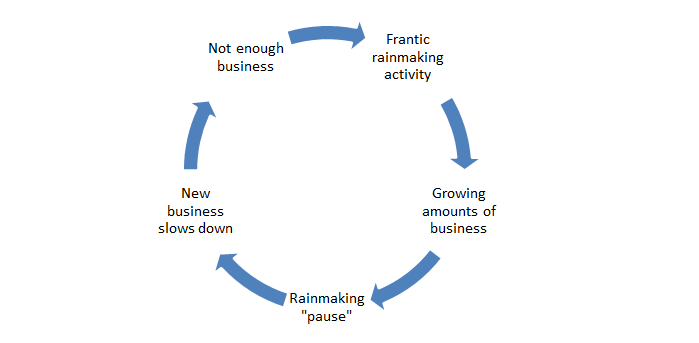What makes you special?
Every professional has some skill, opportunity, or attribute that few (if any) others can access. You may have heard the marketing acronym USP, which typically stands for Unique Selling Proposition. A USP refers to those distinguishing factors. Identifying your USP is key not only to letting your potential clients know what makes you different and why they should hire you, but also paves the way for your to market yourself in fresh ways.
For example, a Unique Selling Proposition might be that you draw on your background in tax law to support your clients’ licensing needs. Perhaps you are a divorced father of two who draws on your own life experience in serving divorcing fathers. In either case, you might use the USP you’ve identified to craft a marketing message that answers potential clients’ questions or concerns (some of which they may not even be aware of yet) by highlighting your USP.
To identify your Unique Selling Proposition, ask yourself:
- What past experience (professional or personal) bears on your practice?
- What skill, knowledge, or experience do you bring to your practice that will be helpful for clients?
- What kind of practice-related opportunities can you forecast, and how can you position yourself to meet them?
Another way to think of a USP is as a Unique Service Proposition. How can you serve your clients in new or innovative ways? In addition to your primary services, can you offer any ancillary services or products that will better meet your clients’ needs? Are there free or reduced-fee services that you might offer as a way of introducing yourself and your skills to a class of potential clients or referral sources?
A Unique Service Proposition might include offering monthly free Q&A meetings during which you respond to potential clients’ questions about topics related to your practice area. For example, if you practice elder law, you might host a monthly gathering to help adult children learn what legal issues they should plan for as they assist their aging parents. You could offer a fee-based group in which you cover key issues in more depth, and you might have certain forms or templates for sale that the adult children could use to implement your suggestions.
Perhaps your practice spans geographic areas in such a way that you don’t often have an opportunity to meet face-to-face with your clients. You might offer videoconferencing or other technology-based communication and collaboration resources to bridge the distance and interact more directly with clients. Since many lawyers still limit their interactions to telephone, email, and mail, you might craft a marketing message around the personal service you offer, the importance of tailoring legal solutions to each individual (or business) and weave in your enhanced communication opportunities.
To identify your Unique Service Proposition, ask yourself:
- How can I meet both legal and non-legal needs that my clients frequently present?
- How can I build innovative services that will benefit my clients?
- What might I do to answer potential client questions, introduce my clients to beneficial resources, or otherwise extend my services in unexpected ways?
Identifying your USPs and using them to craft a marketing message requires analysis, insight, and sometimes even an intuitive leap. Try brainstorming what can distinguish you and your practice with the proviso that no answer is too wacky to be considered. Sometimes impractical or unpalatable ideas provide the leap to a truly unique marketing message and practice.
Sometimes it’s hard to gain the 30,000-foot perspective necessary to identify what you can harness to distinguish your practice. If you’re having trouble spotting your opportunities, click this link to set up a time to discuss how I might be able to help.

